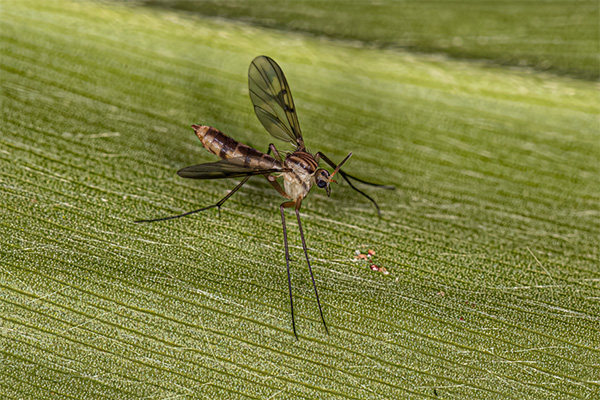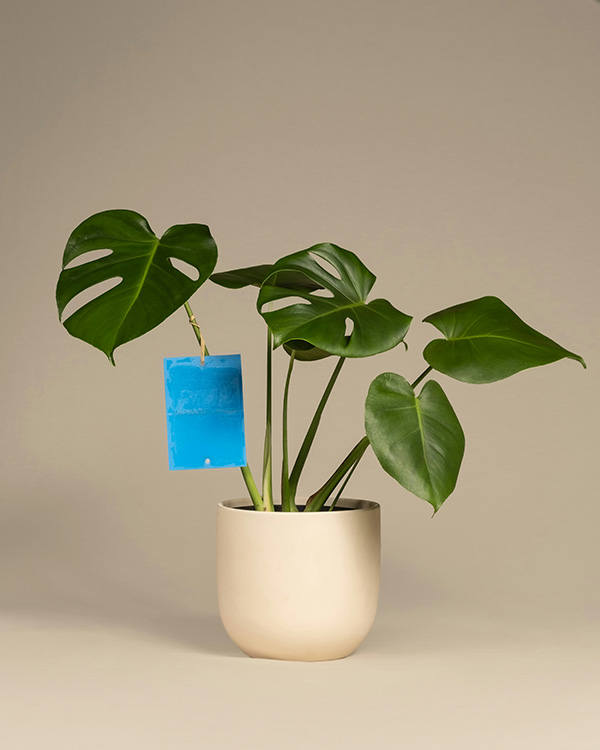Is your peaceful home turning into a battleground against gnats? These tiny, buzzing invaders can be more than just a nuisance—they're a full-blown annoyance that can take over your living spaces. But don't despair!
In this ultimate guide, we’re going to show you how to reclaim your space from these tiny invaders. Learn the secrets to not only outsmarting gnats but also preventing their return. From natural remedies to foolproof tips, we've got everything you need to know to bid farewell to gnats for good.
What Are Gnats?
Gnats constitute a group of tiny flying insects, including fungus gnats, fruit flies, and drain flies. They typically measure just 2-10 mm in length, with slender bodies and long legs. Gnats are often found in damp environments, attracted to moist soil, organic decay, and overripe fruits.
Some species, like fungus gnats, can damage houseplants by feeding on their roots, while others are merely nuisances. Their presence in homes or gardens usually indicates excessive moisture or the presence of decaying organic matter, and they are known for their persistent, often irritating swarming behavior.
What Are the Signs that You Have a Gnat Infestation?
The most noticeable indication of a gnat infestation is the sudden appearance of multiple gnats flying around when you activate the sink, shift a houseplant, or disturb an old piece of fruit. Unlike some pests, gnats don't cause damage to wood structures or leave visible droppings. Therefore, the presence of these flying insects should be taken as a clear sign of an infestation, prompting immediate action to address the issue.

Types of Gnats
There are several types of gnats, and understanding the specific type of gnat infestation can aid in the development of effective control and prevention methods.
Fungus Gnats: These are dark, mosquito-like gnats often found around houseplants. They thrive in moist soil and are known for damaging the roots of young plants. Fungus gnats are drawn to fungi and decomposing organic material present in the soil.
Eye Gnats: Small and yellowish in color, eye gnats are attracted to fluids secreted by the eyes, nose, and ears of humans and animals. They don’t bite but can be annoying and potentially spread bacterial infections.
Buffalo Gnats or Black Flies: These are small, black, biting gnats found near streams and rivers. Renowned for their painful bites, these insects can pose a notable nuisance, particularly in rural and suburban regions.
Sand Gnats or Sand Flies: Located in sandy regions, these gnats are recognized for their propensity to bite. Their bites can be painful and sometimes cause allergic reactions.
Phorid Flies: Also known as humpbacked flies, they are small and resemble fruit flies but are distinguished by their humped backs. These insects are frequently encountered in areas with decomposing organic material, sewage, and drains.
Drain Flies: These gnats have a moth-like appearance and are found around drains, sewers, and other areas with standing water. They feed on organic matter and sewage.
How To Get Rid Of Gnats
1. Identifying the Source
Understanding the specific type of gnat you're dealing with is crucial for effective eradication. Different gnats have distinct breeding habits and preferred environments. Fungus gnats, for instance, breed in moist soil of overwatered houseplants, while fruit flies are drawn to overripe fruits and fermenting organic matter. Conduct a thorough inspection of your home to identify potential breeding sites, such as standing water, damp soil in plants, clogged drains, or kitchen areas where food waste is not properly managed.
2. Removing Breeding Grounds
To tackle fungus gnats, ensure that houseplant soil can dry out between waterings; overwatering creates an ideal breeding environment for these pests. For fruit flies, be vigilant about disposing of overripe fruits and vegetables. Ensure that garbage bins, especially those in the kitchen, are cleaned regularly and have tightly fitting lids to prevent gnats from accessing food waste.
3. Proper Sanitation
Maintaining cleanliness is key to preventing gnat infestations. Keep kitchen surfaces, sinks, and counters free of food debris. Regular garbage disposal and cleaning of any residues in bins are essential. Bathroom and kitchen drains should be kept clear of organic buildup, as these can become breeding grounds for certain types of gnats.
4. Traps
Store-bought or DIY traps can be highly effective in controlling gnat populations. To create a basic apple cider vinegar trap, fill a bowl with vinegar, cover it with plastic wrap, and perforate small holes; the gnats will be lured by the vinegar and become ensnared. A red wine trap work similarly and might attract different gnat species. Sticky traps are another option; they can be placed near infested areas to capture gnats.
5. Professional Pest Control
If homemade remedies and chemical treatments prove ineffective in addressing the problem, it might be advisable to enlist the assistance of professional pest control services. These experts can offer more potent solutions and can identify and treat hidden breeding sites that might be difficult to locate.
6. Electric Insect Killer
Consider investing in an electric insect killer for your porch or patio, commonly known as a bug zapper. These devices attract gnats and then eliminate them with an electric charge as they fly into the unit. Employing bug zappers can greatly reduce the population of biting gnats in your outdoor spaces. While they are great for deterring these pests and decreasing their numbers, it's important to note that they won't completely eradicate the gnat population in your yard.

7 Ways To Get Rid Of Gnats
Natural Repellents
Natural repellents can be a safe and effective way to deter gnats. Essential oils like peppermint, lemongrass, or eucalyptus, diluted and sprayed around the house, can keep gnats at bay due to their strong scent. Additionally, certain plants like marigolds or citronella act as natural gnat repellents and can be placed around the home.
Candle Trap
The candle trap is a simple yet ingenious method. In a darkened room, light a candle and place it in a bowl of water. Gnats are attracted to the light and heat of the candle but often end up falling into the water and drowning.
Chemical Treatments
For severe infestations, chemical treatments such as insecticidal sprays or foggers may be necessary. Exercise caution when using these devices, especially in locations where food is prepared or consumed, and always adhere to the manufacturer's instructions.
Use a Spray
If you're dealing with a minor pest issue, you can address it by using a basic remedy. Combine one tablespoon of vinegar with a small quantity of dish soap in a spray bottle. This mixture should suffice for smaller pest problems. Yet, if you observe gnats hovering around your houseplants or crawling in your potting soil, it's probable that the issue stems from overwatering. To tackle this specific gnat issue, you can apply a gentle insecticide like neem oil or a dish soap solution diluted in warm water to the affected plant. If you choose the dish soap solution, make sure to rinse it off thoroughly after two hours.
Use Sticky Traps
Sticky traps present a straightforward and easy-to-use solution. Position them in areas where gnats are frequently seen, such as near houseplants, fruit bowls, and garbage disposal areas. The adhesive surface captures gnats, reducing their numbers significantly.
DIY Vinegar Traps
Also works as fruit fly trap, apple cider vinegar is highly attractive to gnats as well. Craft a straightforward trap by combining it with a few drops of dish soap in a bowl, covering it with plastic wrap, and puncturing small holes. Gnats are drawn to the scent, enter the trap, and are unable to escape, effectively reducing their numbers.
Improve Drainage
Overwatering is a common cause of gnat infestations, particularly for fungus gnats. Guarantee that houseplants have adequate drainage, and permit the soil to dry out thoroughly between watering sessions. This can be facilitated by using pots with drainage holes and choosing well-draining soil mixes.
How To Prevent Gnats
Maintain Dry Conditions: Keeping your home, especially areas like kitchens, bathrooms, and basements, dry is crucial in preventing gnat infestations. Excess moisture attracts gnats, so using dehumidifiers in damp areas can be very effective. Additionally, addressing any leaks in plumbing or the roof promptly is important, as gnats are drawn to moisture. Regularly checking and maintaining a dry environment in these key areas can significantly reduce the likelihood of gnat problems.
Avoid Overwatering Plants: Overwatering houseplants is a frequent error that can result in gnat infestations, with fungus gnats being particularly drawn to damp soil. It is crucial to let the soil dry out between waterings and confirm that your pots have sufficient drainage. This prevents the buildup of excess moisture, which is a prime breeding ground for these pests.
Regularly Dispose of Garbage: Garbage, especially when it contains organic waste, can be a significant attractant for gnats. To prevent this, it's important to empty kitchen bins frequently and ensure that all garbage containers are regularly cleaned and disinfected. This helps to eliminate potential food sources and breeding sites for gnats.
Seal Windows and Doors: Gnats have the ability to infiltrate homes through minor openings in windows and doors. Ensuring these are properly sealed is an effective way to keep them out. Repair any holes or tears in window screens and consider installing fine mesh screens as an added measure to prevent gnats from entering.
Store Food Properly: Effective prevention of gnats involves proper food storage. Ensure that ripe or overripe fruits and vegetables are stored in the refrigerator or sealed containers. This removes the attractants that gnats seek out. Additionally, keeping pantry items in airtight containers can prevent gnats from accessing and breeding in these food sources.
Clean Sink Drains Regularly: Regularly cleaning sink drains is essential in gnat prevention as these are common spots where gnats lay eggs. Using a drain cleaner or a mix of vinegar and baking soda can help remove the organic buildup that attracts gnats. Flushing drains with hot water on a regular basis also helps to keep them clear and free from gnat-attracting materials.
Remove Standing Water: Any sources of standing water in or around your home should be eliminated. This includes emptying containers like plant saucers, pet water bowls, and ensuring gutters and drainage systems are clear. Standing water serves as a breeding ground for gnats, making it crucial to maintain dry conditions in these areas.
Proper Soil Management: If you have houseplants, consider using gnat-resistant potting mix or adding a layer of sand or gravel on top of the soil. This can deter gnats from laying eggs and can be an effective preventive measure against fungus gnats, which are commonly found in potted plants.
Use Gnat Repellents: Natural repellents like essential oils can be effective in deterring gnats. Essential oils like peppermint, eucalyptus, and lemongrass can be employed in diffusers or combined with water and sprayed around potential gnat entry points and breeding sites. Utilizing these natural repellents can assist in keeping gnats at bay without resorting to harsh chemicals.
Inspect New Plants: When introducing new plants to your home, it's important to inspect them thoroughly for signs of gnat larvae. Isolating new plants for a few days can help ensure they do not introduce unwanted pests. This practice helps to prevent the introduction of gnats from external sources.
